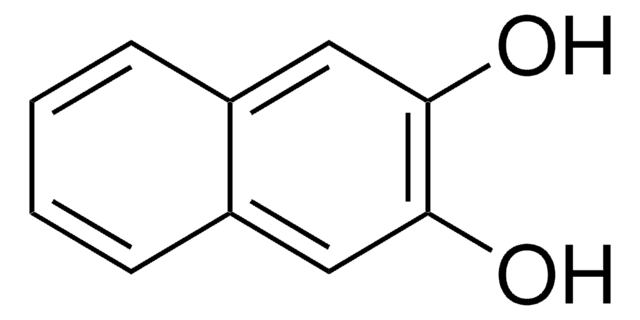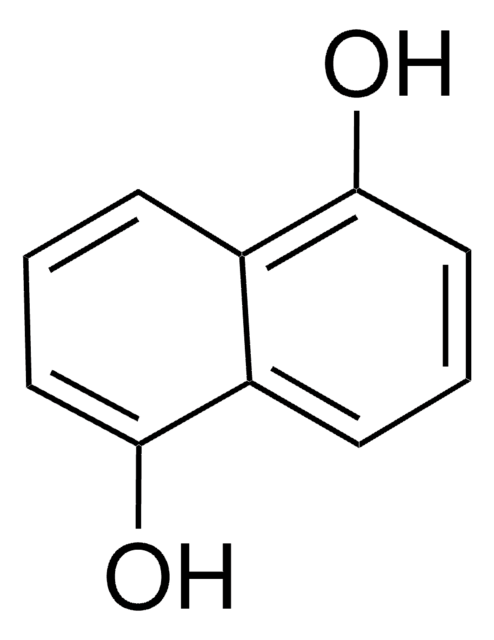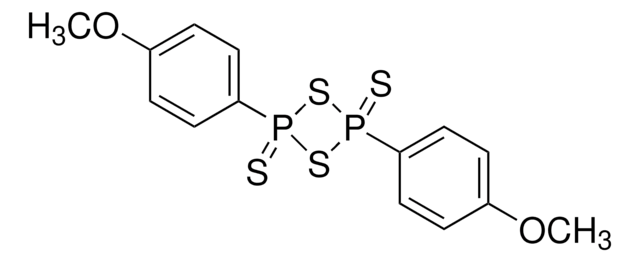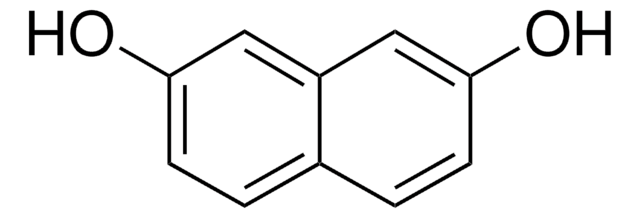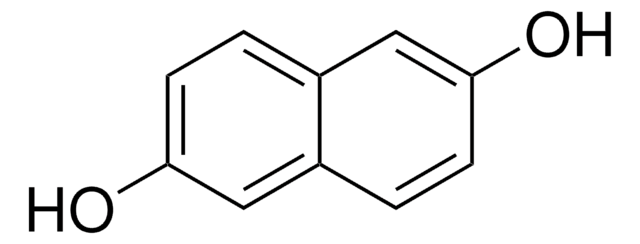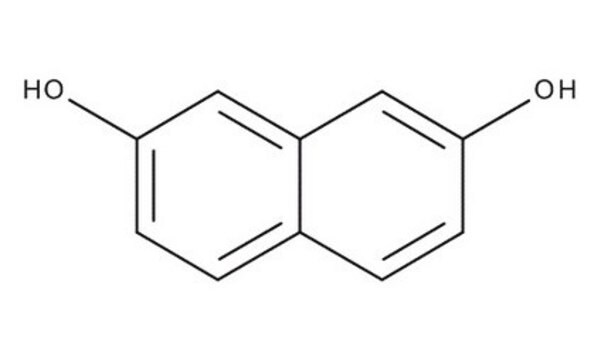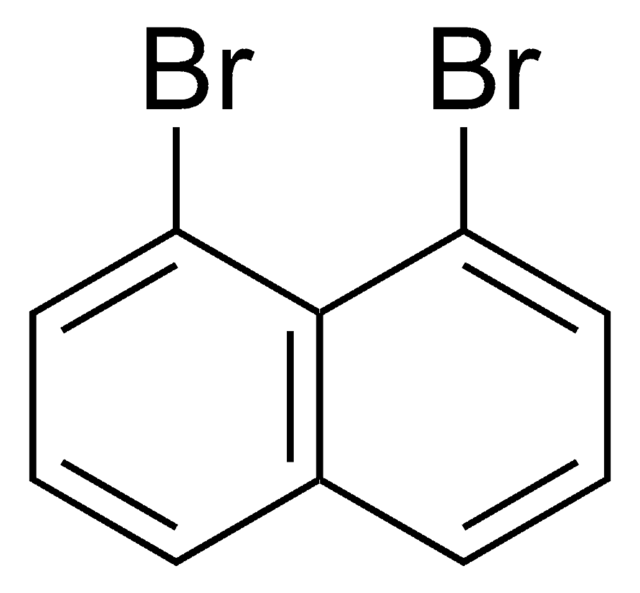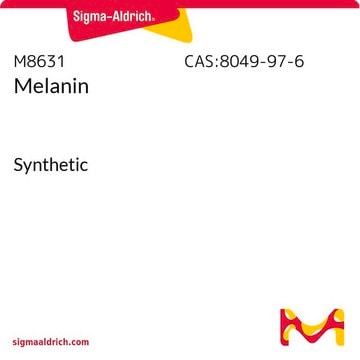740683
1,8-Dihydroxynaphthalene
95%
Sinónimos:
1,8-Naphthalenediol
Iniciar sesiónpara Ver la Fijación de precios por contrato y de la organización
About This Item
Fórmula empírica (notación de Hill):
C10H8O2
Número de CAS:
Peso molecular:
160.17
Beilstein:
2044947
Número MDL:
Código UNSPSC:
12352100
ID de la sustancia en PubChem:
NACRES:
NA.22
Productos recomendados
Ensayo
95%
Formulario
solid
mp
137-143 °C
temp. de almacenamiento
2-8°C
cadena SMILES
Oc1cccc2cccc(O)c12
InChI
1S/C10H8O2/c11-8-5-1-3-7-4-2-6-9(12)10(7)8/h1-6,11-12H
Clave InChI
OENHRRVNRZBNNS-UHFFFAOYSA-N
¿Está buscando productos similares? Visita Guía de comparación de productos
Aplicación
1,8-Dihydroxynaphthalene (DHN) can be used as:
- An intermediate in the preparation of benzo analogs of spiromamakone A.
- A starting material to synthesize naphthopyran derivatives.
- An intermediate in the total synthesis of palmarumycin CP17 analogs.
Palabra de señalización
Danger
Frases de peligro
Consejos de prudencia
Clasificaciones de peligro
Eye Dam. 1
Código de clase de almacenamiento
11 - Combustible Solids
Clase de riesgo para el agua (WGK)
WGK 3
Punto de inflamabilidad (°F)
Not applicable
Punto de inflamabilidad (°C)
Not applicable
Elija entre una de las versiones más recientes:
¿Ya tiene este producto?
Encuentre la documentación para los productos que ha comprado recientemente en la Biblioteca de documentos.
Los clientes también vieron
E S Jacobson et al.
Infection and immunity, 63(12), 4944-4945 (1995-12-01)
1,8-Dihydroxynaphthalene melanin in Wangiella dermatitidis and Alternaria alternata was titrated in vivo with the oxidants permanganate, hypochlorite, and H2O2. Melanized strains neutralized more oxidant and withstood higher concentrations of permanganate and hypochlorite than albino strains did. H2O2 killing required 1,000-fold
Pigment biosynthesis and virulence.
A A Brakhage et al.
Contributions to microbiology, 2, 205-215 (1999-10-16)
R Romero-Martinez et al.
Infection and immunity, 68(6), 3696-3703 (2000-05-19)
Sporothrix schenckii is a human pathogen that causes sporotrichosis, an important cutaneous mycosis with a worldwide distribution. It produces dark-brown conidia, which infect the host. We found that S. schenckii synthesizes melanin via the 1,8-dihydroxynaphthalene pentaketide pathway. Melanin biosynthesis in
Synthesis of spiromamakone a benzo analogues via double oxa-michael addition of 1, 8-dihydroxynaphthalene
Tsukamoto H, et al.
Organic Letters, 18, 4848-4851 (2016)
H F Tsai et al.
Journal of bacteriology, 180(12), 3031-3038 (1998-06-11)
Aspergillus fumigatus, an important opportunistic pathogen which commonly affects neutropenic patients, produces conidia with a bluish-green color. We identified a gene, alb1, which is required for conidial pigmentation. The alb1 gene encodes a putative polyketide synthase, and disruption of alb1
Nuestro equipo de científicos tiene experiencia en todas las áreas de investigación: Ciencias de la vida, Ciencia de los materiales, Síntesis química, Cromatografía, Analítica y muchas otras.
Póngase en contacto con el Servicio técnico